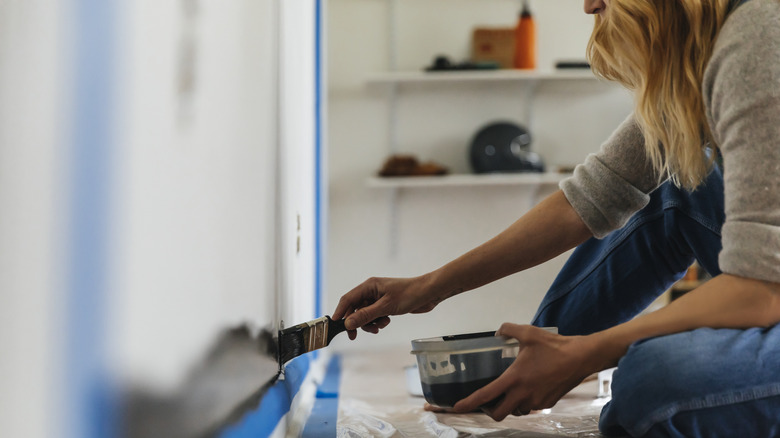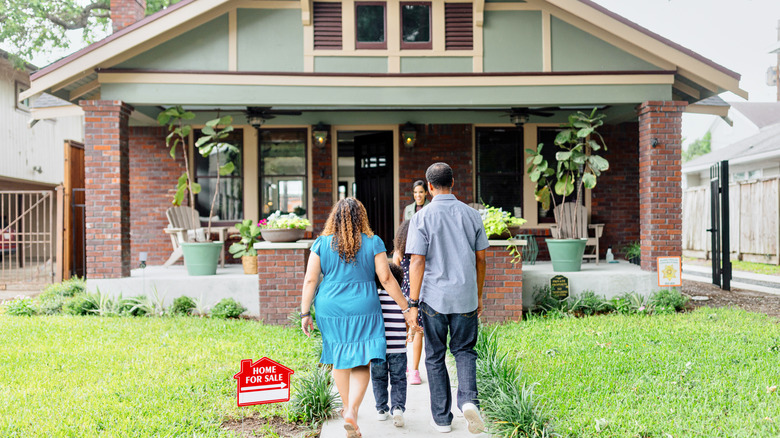David Bromstad's Budget-Friendly Advice About Home Buying Makes So Much Sense
There's no denying that searching for your dream home is an exciting milestone. But alongside the excitement often comes stress, uncertainty, and hesitation — which makes sense; it is a huge life decision after all. One of the biggest questions buyers find themselves facing is whether to invest in a move-in-ready home or take on a fixer-upper. And, according to HGTV star David Bromstad — who's helped hundreds of clients find their perfect place on "My Lottery Dream Home" — if you're house hunting on a budget, buying a fixer-upper is usually the smarter choice.
He believes the main reason for this, per Realtor, is that spending less on the house itself will leave more room in your budget for renovations. And realistically, even with a brand-new, turnkey house, there will almost always be upgrades you'll want to tackle to make the space your own. So buying new will not only have you paying more money upfront, but could also leave you covering additional costs for future renovations.
Bromstad says he kept this same advice in mind when shopping for his own dream home in Orlando, Florida, and pondering whether he wanted to find a renovation project or something more move-in ready. "I was looking for either," he told Realtor. "I was super open. Even if I walk into a house and it's all perfectly done, there's still going to be lots of David Bromstad touches that are going to happen." If you're trying to keep things budget-friendly, though, there are some important things to look for in your own fixer-upper.
Things to remember when taking on a renovation
When shopping for a budget-friendly home, it's important to take note of the types of renovations that will need to happen in order to turn it into your dream space. While there are lots of savvy tips for renovating on a budget, certain upgrades simply tend to be more expensive, such as structural fixes and roof replacements. That said, there's almost always a way to bring costs down — even when it comes to something like a kitchen remodel, which is often known as the priciest room to renovate.
Two easy and budget-friendly ways to make your kitchen look more expensive, for example, are by updating the countertops (opt for laminate over pricey quartz) and backsplash. Or, you could extend your kitchen cabinets all the way to the ceiling — Bromstad's secret to a luxe home — and add updated hardware. Other cosmetic renovations around the house that can be done on a budget include painting the walls a new color, changing the tiles in the bathroom, and putting in new floors. Of course, you'll always want to keep in mind which renovations you'll need to hire a professional for, as there are some home DIY projects you should avoid at all costs, such as any plumbing and electrical jobs.
Location is key
Another thing to think about when opting for a lower-budget fixer-upper over a move-in-ready home is the location you're buying in. Location plays two very key roles here. The first is the fact that house prices can be much higher in certain areas. So if you're looking to purchase a less expensive home, buying in states like Iowa, Ohio, and Minnesota is recommended over states like New York, Washington, and Montana. The second is that renovation costs can vary widely from state to state due to things like material costs and labor charges. So, if you're considering a renovation project, you may want to shop in states like Texas or Indiana, rather than California or Illinois.
At the end of the day, Bromstad's advice holds a lot of merit — especially if you start thinking about the future resale of your home. One of the biggest benefits of choosing a fixer-upper over a fully renovated turnkey home is that the latter often has little room left to grow in value. Whereas buying a lower-priced home and doing your own DIY upgrades can add value, leading to a higher profit when all is said and done.


